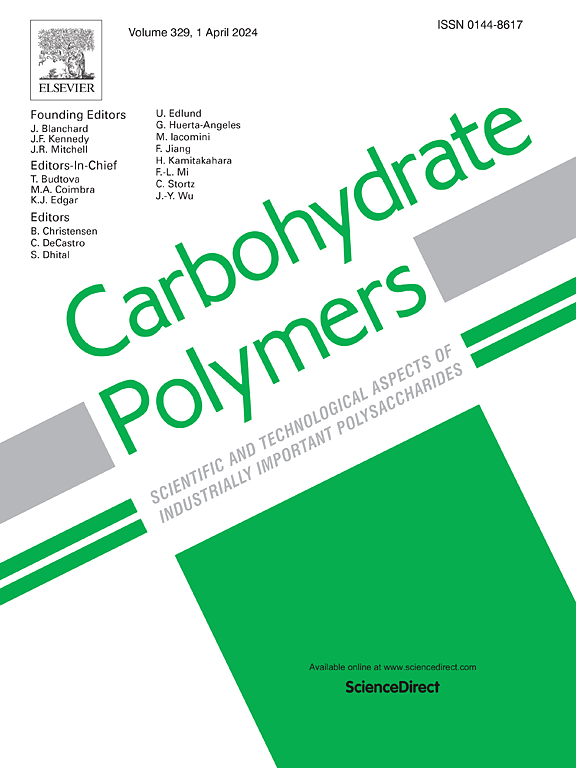Double-layer biodegradable hydrogel based on tragacanth gum as an electrically conductive nanoplatform for TENS device application
IF 10.7
1区 化学
Q1 CHEMISTRY, APPLIED
引用次数: 0
Abstract
This research focuses on designing and creating a double-layer bio-hydrogel made from tragacanth gum (TG) and carboxylated graphene (GrF), coated with polyaniline (PANI) for transcutaneous electrical nerve stimulation (TENS) devices. X-ray diffraction (XRD) analysis showed that the PANI coating removed peaks associated with crystalline regions (13.99° and 16.87°) in the tragacanth gum/polyvinyl alcohol/carboxylated graphene (TPG) bio-hydrogel. This indicates strong interactions between the PANI layer and the TPG bio-hydrogel matrix, with reduced crystallinity due to structural changes. Conductivity tests revealed significant improvements from both GrF and the PANI coating. At low frequencies (80 Hz), the PANI coating increased the alternating current conductivity of the tragacanth gum/polyvinyl alcohol (TP) bio-hydrogel by 20,481 times and that of the TPG bio-hydrogel by 1804 times. Contact angle measurements indicated a low hydrophilic surface (61.4°), thanks to the GrF and PANI coating. FESEM analysis confirmed the uniform distribution of GrF within the bio-hydrogel and revealed two distinct shapes in the PANI coating, indicating improved structural integrity and functionality. Mechanical tests showed a 4.59-fold increase in tensile strength, improving durability. MTT assays confirmed biocompatibility (>90.37 % cell viability), and the bio-hydrogel biodegraded completely within two months.

求助全文
约1分钟内获得全文
求助全文
来源期刊

Carbohydrate Polymers
化学-高分子科学
CiteScore
22.40
自引率
8.00%
发文量
1286
审稿时长
47 days
期刊介绍:
Carbohydrate Polymers stands as a prominent journal in the glycoscience field, dedicated to exploring and harnessing the potential of polysaccharides with applications spanning bioenergy, bioplastics, biomaterials, biorefining, chemistry, drug delivery, food, health, nanotechnology, packaging, paper, pharmaceuticals, medicine, oil recovery, textiles, tissue engineering, wood, and various aspects of glycoscience.
The journal emphasizes the central role of well-characterized carbohydrate polymers, highlighting their significance as the primary focus rather than a peripheral topic. Each paper must prominently feature at least one named carbohydrate polymer, evident in both citation and title, with a commitment to innovative research that advances scientific knowledge.
 求助内容:
求助内容: 应助结果提醒方式:
应助结果提醒方式:


